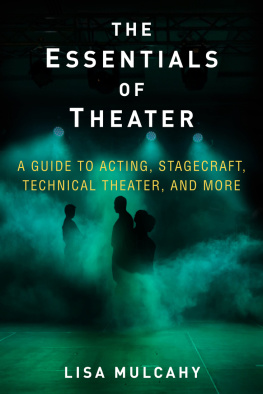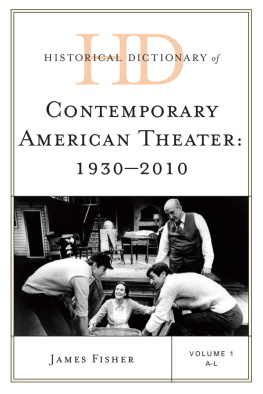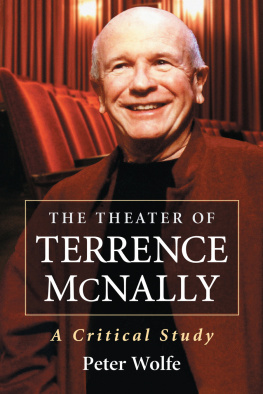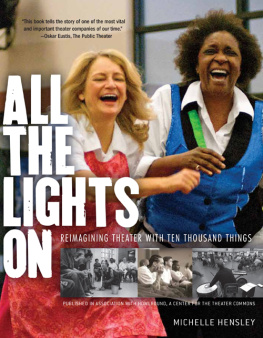
Bodies and Transformance in Taiwanese Contemporary Theater
In Bodies and Transformance in Taiwanese Contemporary Theater, Peilin Liang develops a theory of bodily transformation.
Proposing the concept of transformance, a conscious and rigorous process of self-cultivation toward a reconceptualized body, Liang shows how theater practitioners of minoritized cultures adopt transformance as a strategy to counteract the embodied practices of ideological and economic hegemony. This book observes key Taiwanese contemporary theater practitioners at work in forging five reconceptualized bodies: the energized, the rhythmic, the ritualized, the joyous, and the (re)productive. By focusing on the development of transformance between the years of 20002008, a tumultuous political watershed in Taiwans history, the author succeeds in bridging postcolonialism and interculturalism in her conceptual framework.
Ideal for scholars of Asian and postcolonial theater, Bodies and Transformance in Taiwanese Contemporary Theater shows how transformance, rather than performance, calibrates with far greater precision and acuity the state of the body and the culture that it seeks to create.
Peilin Liang is Assistant Professor of Theatre Studies at the National University of Singapore. She is the director of A Home on the Island, a transnational Practice as Research (PaR) project in applied theater. Her work has appeared in Theatre Topics, Theatre Research International, Contemporary Theatre Review, InterAsia Cultural Studies, Performance Research, and Research in Drama Education.
Bodies and Transformance in Taiwanese Contemporary Theater
Peilin Liang
First published 2020
by Routledge
2 Park Square, Milton Park, Abingdon, Oxon OX14 4RN
and by Routledge
52 Vanderbilt Avenue, New York, NY 10017
Routledge is an imprint of the Taylor & Francis Group, an informa business
2020 Peilin Liang
The right of Peilin Liang to be identified as author of this work has been asserted by her in accordance with sections 77 and 78 of the Copyright, Designs and Patents Act 1988.
All rights reserved. No part of this book may be reprinted or reproduced or utilised in any form or by any electronic, mechanical, or other means, now known or hereafter invented, including photocopying and recording, or in any information storage or retrieval system, without permission in writing from the publishers.
Trademark notice: Product or corporate names may be trademarks or registered trademarks, and are used only for identification and explanation without intent to infringe.
British Library Cataloguing-in-Publication Data
A catalogue record for this book is available from the British Library
Library of Congress Cataloging-in-Publication Data
A catalog record for this book has been requested
ISBN: 978-0-367-20533-1 (hbk)
ISBN: 978-0-429-26209-8 (ebk)
Typeset in Garamond
by Apex CoVantage, LLC
For
Tsai Huei-Jen
Liang Chung-Feng
Contents
Whats your name?
Wherere you from?
These were the most frequently asked questions posed to a Taiwanese migrant child at a predominantly pakeh school in the late 1980s of Christchurch, Aotearoa New Zealand. To answer these questions, I eventually became a story-monger in high school. With a Walkman, cassette tapes, and spare batteries, I began interviewing my grandparents on my visits to Taiwan. My afterschool project soon sprawled into recording stories from grandparents of friends and their friends in the Taiwanese community residing in Christchurch.
Three stories of lasting images etched in my memory. The first was my grandfather in his immaculate dashing white suit riding on his bicycle. Then the Americans began to air raid. Being too obvious a target, he jumped straight off his bike and dived into a nearby paddy field. To save his skin, he couldnt keep his suit. The year was 1945, near the end of the 50-year Japanese occupation. The second was a ship full of Japanese wives sailing Taiwan bound. They were newlyweds to their Taiwanese medic husbands. The war ended. Japan announced its surrender and repatriated medical personnel that were sent from the colony to the main island to support the war. Many of the wives ended up committing suicide, out of shame, for their unhappy marriages. But she lived and stayed. Overlapping the image of my grandfather covered in mud against a tapestry of falling bombshells, and Japanese brides committing bloody suicide, was the third the dismembered torso of a mentally tormented man. He was nameless, with bombs tightly strapped to his body. From pig sheds to rice barns, the man sought for hideouts in Puli, until he could no longer bear the agonizing fear of being taken captive. It had been said that some Kuo-min Tang officers were in hot pursuit after him. Before any hand was laid on the man, he terminated his ordeal by taking his own life. The year was 1947, shortly after the February 28 incident.
Through these images, I attempted to imagine a past before my own that determined my present being-in-the-world: my Hakka aphasia, Hok-lo stammering, and an Asiatic outlook that always stood out in an ocean of pakeh teenage girls at a high school. While acquainting myself with William Shakespeare, Janet Frame, the Treaty of Waitangi, and the suffrage movement, I also had to make out memories tied to these superimposed images of sullied and ruptured bodies.
A story can come in many versions. This is especially true of island stories. The one that you are about to read is only one of the many. Not only that, island stories are often invested and entangled, intensified by its environs aerial, terrestrial and aquatic.1 This particular island story took place in East Asia, a place intensely affected by colonialism, the Cold War, and globalization. Bodies are the through-line of its narrative. In my own partial and yet perennial belonging to the islands: Taiwan of my childhood, New Zealand of my formative years, Hawaii of my academic training, and Singapore where this book was written, I oscillate between frames of bodily (non)otherness. In moving between these frames of existence, I capture a fleeting glimpse of that brilliant, intense moment when bodies are transforming.
Note
See Elaine Stratford, Island Geographies: Essays and Conversations, i.
This book is a result of the generosity, care, and wisdom of many. This goes all the way back to my professors whose mentorship has substantially shaped my intellectual development at the University of Hawaii at Mnoa. Special thanks to Elizabeth Wichmann-Walczak, Marcus Wessendorf, and Robert Cheng for their valuable critique and guidance when I first began the project. In completing this book, I am greatly indebted to the National University of Singapore for the Writing Fellowship and the Book Grant Award, and to the Department of Asian Studies at the University of Texas at Austin for the Taiwan Studies Postdoctoral Fellowship. are extensive rewrites of three previously published journal articles with permission graciously granted by Cambridge University Press and Routledge. I want to thank very deeply Victor Chen, Laurie Durand, Tsai Yen-zen, and Matt Yoxall for reading chapters of the manuscript and providing insightful feedback in the process of drafting. I am especially grateful to my colleagues Yong Li Lan and John Richardson for their advice and insights as I navigate my way in academia. John, who passed on during the writing of the manuscript, is dearly missed.


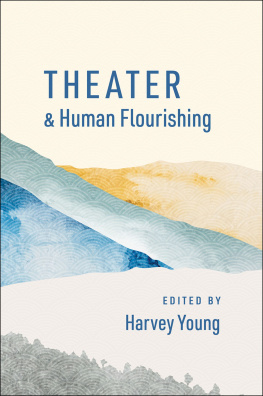
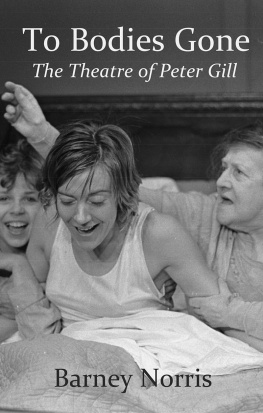
![Viola Spolin - Improvisation for the Theater: A Handbook of Teaching and Directing Techniques [1963 ed.]](/uploads/posts/book/406435/thumbs/viola-spolin-improvisation-for-the-theater-a.jpg)
